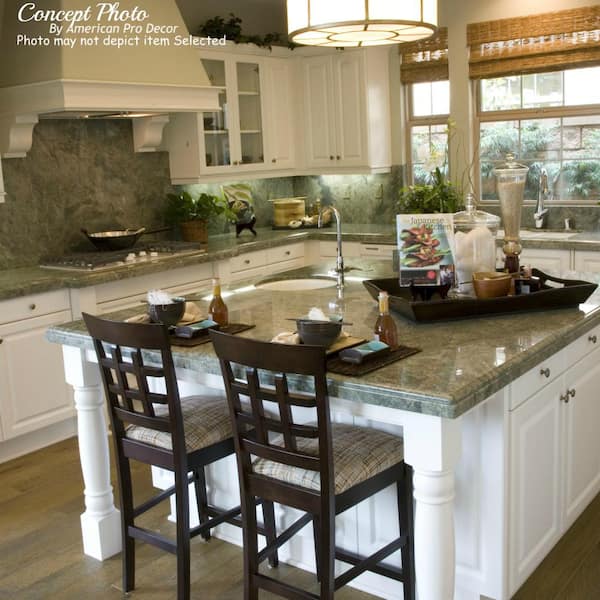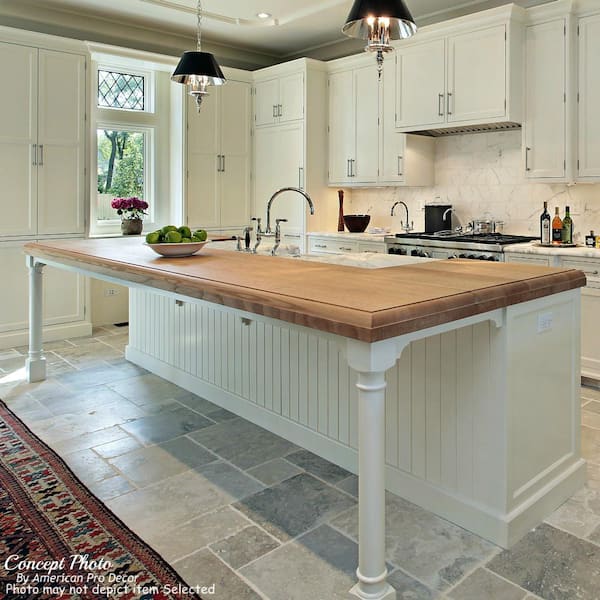The Leading Kitchen Island Leg Styles to Enhance Any Kind Of Design Aesthetic
The Leading Kitchen Island Leg Styles to Enhance Any Kind Of Design Aesthetic
Blog Article
Exactly How to Pick the Perfect Cooking Area Island Leg to Boost Your Kitchen Style
Selecting the ideal cooking area island leg is a nuanced procedure that calls for careful factor to consider of numerous aspects such as style style, functionality, and product. A well-chosen leg can not only sustain the framework yet also offer as a defining component that enhances the general aesthetic of your cooking area.
Assess Your Cooking Area Style
When it involves choosing a kitchen island leg, it's important to analyze your cooking area style to make sure a natural layout. The cooking area is frequently the heart of the home, and the island works as a visual and practical focal point. The choice of leg design must show the total style of your kitchen, whether it be modern-day, standard, farmhouse, or commercial.
As an example, in a contemporary kitchen, streamlined, straight legs in a minimal style might enhance the structured look. On the other hand, a rustic kitchen could take advantage of hefty, turned legs that communicate warmth and personality. If your kitchen includes a traditional decor, consider elaborately developed legs that echo standard workmanship.
Pay interest to the proportions of both the island and the surrounding space; the leg's range need to match the overall dimensions. By straightening your leg choice with your kitchen's style, you create a linked and inviting environment that shows your individual visual.
Take Into Consideration Product Options
Choosing the best product for your kitchen island leg is crucial, as it influences both durability and visual charm. Different products offer unique benefits and can significantly affect the total style of your kitchen.
Timber is a preferred selection, recognized for its heat and flexibility. It can be tarnished or repainted to match your kitchen's color pattern, giving a classic appearance. It may require more upkeep to protect against damages from moisture and heat.
Metal legs, such as stainless steel or wrought iron, evoke a contemporary and commercial feeling. They are resistant and exceptionally sturdy to damage, making them excellent for high-traffic locations. Metal can additionally be finished in different methods, enabling modification in terms of texture and color.
Another choice is composite products, which integrate aesthetics with usefulness. These can simulate the look of wood or metal while often being lighter and less complicated to maintain.
Finally, think about rock legs, which can bring an extravagant touch yet may need additional architectural support. Each product has its distinct attributes, so it's necessary to select one that lines up with your kitchen's general layout vision while making sure long life and performance.
Explore Layout Features
Various layout attributes can improve the functionality and visual charm of a kitchen area island leg, making it an important component of the total cooking area style. One crucial element to consider is the design of the leg, which can vary from typical turned styles to sleek, modern lines. The option of design must enhance the existing cabinets and fixtures, creating a natural appearance.
Along with style, the surface of the leg can substantially affect the kitchen's aesthetic appeal. Alternatives such as repainted, tarnished, or all-natural surfaces can either highlight the leg as a declaration item or permit it to mix perfectly into the kitchen environment. Attractive elements, such as carvings or embellishments, can also include character and uniqueness, transforming a straightforward leg right into a prime focus.
In Look At This addition, integrating functional functions like open shelving or incorporated storage space can boost energy while keeping aesthetic worth. The interaction of these design includes not just raises the kitchen area island leg's look but additionally adds to the general functionality of the kitchen area. By attentively choosing these aspects, homeowners can ensure their kitchen island leg offers both practical and attractive functions.
Determine Size and Elevation

Usually, the conventional elevation for kitchen area island legs is around 30 inches, which Read Full Report aligns with the elevation of typical kitchen counters and eating surface areas. Nonetheless, if your island serves a twin objective, such as a breakfast bar, you may consider a greater leg measuring 36 inches. This height promotes a more informal dining experience and suits bar feceses conveniently
In regards to size, the leg should not just give sufficient assistance but likewise preserve visual equilibrium. A width of 3 to 5 inches is generally suitable, permitting for enough security without subduing the total design. In addition, think about the spacing in between the legs; they should be positioned to permit easy activity and ease of access around the island.
Eventually, taking accurate measurements and considering the meant use the kitchen area island will certainly direct you in selecting the proper dimension and height of the legs, making certain both aesthetic allure and sensible performance in your kitchen area design. kitchen island leg.
Budgeting for Your Selection

Following, identify the design that aligns with your kitchen area's visual. Custom-made legs might come with a costs, while pre-fabricated alternatives usually provide price savings. It's crucial to balance your wanted visual with the practicalities of your budget plan.
Consider extra prices that may emerge, such as installation or completing. If you're intending to work with a specialist for installation, consist of these expenses in your spending plan.
Lastly, allot a backup fund for unforeseen prices that might occur during the renovation. By very carefully reviewing these aspects, you can make enlightened decisions that not only enhance your kitchen's design but likewise keep your renovation within monetary reach. A well-planned budget will certainly guarantee that you accomplish the wanted appearance without jeopardizing your financial objectives.
Verdict
To conclude, picking the perfect kitchen area island leg necessitates careful factor to consider of various factors, consisting of the total kitchen area design, product alternatives, design features, and appropriate dimensions. By straightening these components with the preferred visual and capability, a aesthetically attractive and unified kitchen island can be achieved. In addition, budgeting for the selected products and installation will make certain that the selection process stays viable and practical, inevitably boosting the kitchen's design and functionality.
When it comes to selecting a kitchen island leg, it's vital to examine your kitchen area design to make certain a natural style.Various style features can boost the performance and aesthetic allure of a cooking area island leg, making it an indispensable part of the total cooking area style. The interaction of these design features other not only boosts the kitchen island leg's look but additionally contributes to the general functionality of the kitchen area room.Establishing a budget for your kitchen island leg is a crucial action that can dramatically influence your total kitchen remodelling prices.In verdict, picking the excellent cooking area island leg requires careful consideration of numerous elements, including the overall kitchen area design, product options, layout attributes, and proper dimensions.
Report this page